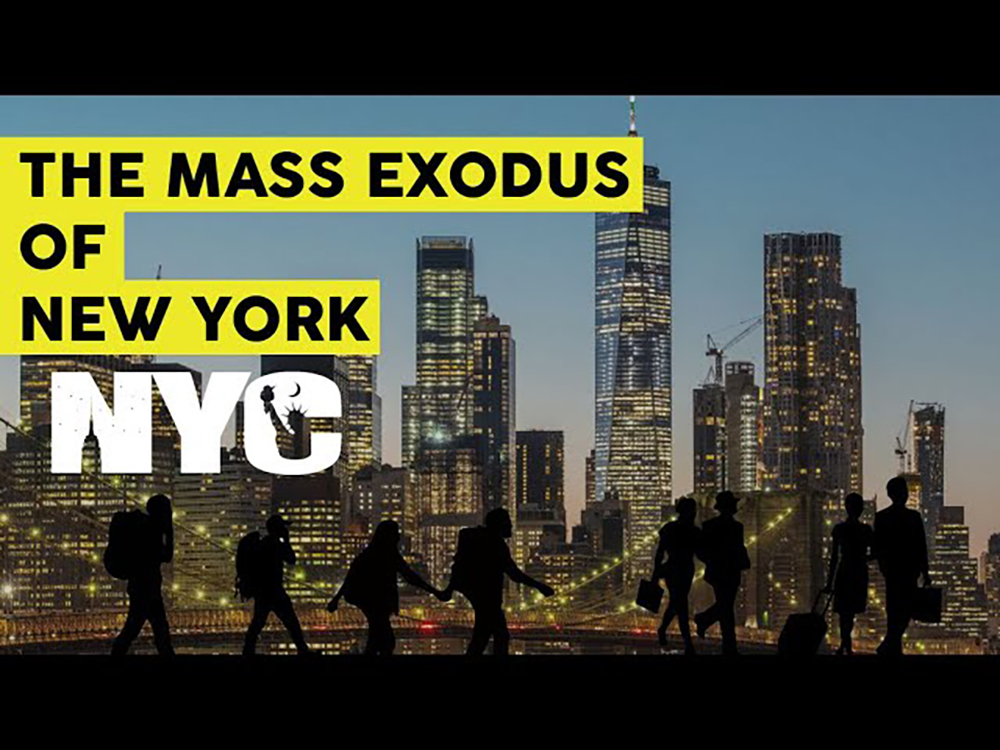|
Getting your Trinity Audio player ready...
|
New York, once the epitome of opportunity and ambition, faces a demographic catastrophe. A recent Cornell University study paints a stark picture of the Empire State’s future, projecting a population decline of more than 2 million residents over the next quarter-century. This isn’t a natural shift; it’s the direct consequence of policy failures. If state leadership does not reverse course, New York risks becoming a hollow shell of its former self, hemorrhaging people, political power, and economic vitality.
The study highlights that New York’s population, currently 19.7 million, could shrink to under 17 million by 2050. This isn’t merely an academic exercise—this decline has already begun. Between 2020 and 2022, New York City lost nearly 500,000 residents, a staggering 5.3% of its population. While some returned, many are gone for good, drawn to states like Florida and Texas, which have seen robust growth during the same period.
The drivers of this decline are unmistakable: more people are leaving than arriving. Birth rates and immigration have failed to offset the exodus, fueled by a toxic mix of high taxes, lawlessness, substandard education, and burdensome regulation. These issues, far from isolated, are the hallmarks of progressive mismanagement that has plagued the state for decades.
The stakes for New York are existential. A shrinking population means fewer seats in Congress, diminishing the state’s ability to influence national policy. From 45 congressional seats in the 1940s, New York now holds just 26, with projections suggesting a further drop to 23 after the 2030 Census. This political decline will have cascading effects, including reduced federal funding tied to population metrics.
Economically, the outlook is just as dire. A smaller population means a shrinking tax base, threatening the state’s ability to fund public services. Businesses, already struggling under New York’s exorbitant tax burden and regulatory red tape, face reduced demand and a shrinking labor pool. Job losses and economic stagnation are inevitable consequences, further fueling the cycle of decline.
At the heart of New York’s crisis lies an unrelenting progressive agenda that has alienated residents and businesses alike. High taxes, rampant crime, failing schools, and ill-conceived policies have created an environment that drives people away.
New Yorkers are among the most heavily taxed in the nation, with recent years bringing billions in additional levies. Governor Hochul’s push for congestion pricing, a regressive tax that disproportionately impacts middle-class commuters, exemplifies the state’s prioritization of revenue over residents’ well-being. Meanwhile, businesses face crushing corporate taxes and regulatory hurdles, making it untenable to operate in the state.
Felonies remain up by a third compared to pre-pandemic levels, and drug use on the streets has become an alarming norm. The lack of accountability for criminals, combined with the state’s permissive stance on public disorder, has eroded the sense of safety for residents and visitors alike. Migrants who might otherwise contribute to the economy are poorly integrated, with some engaging in criminal activities due to lack of support and oversight.
Despite spending more per student than any other state, New York’s public schools produce dismal results. Only half of students in grades three through eight are proficient in basic skills. Families seeking better educational opportunities are fleeing to states where their children have a greater chance of success.
If New York is to halt its decline, it must abandon the policies that have driven so many to leave. This requires bold action:
Lower taxes to make New York competitive with states like Florida and Texas. Simplify regulations to attract businesses and create jobs.
Implement tougher penalties for crime and increase investment in law enforcement to ensure public safety. Address the drug crisis with rehabilitation programs that prioritize recovery over permissiveness.
Overhaul the public school system to prioritize accountability, innovation, and outcomes. Redirect funding to programs that deliver results rather than padding administrative budgets.
Replace ineffective leadership with policymakers who prioritize the interests of residents and businesses over ideological agendas.




